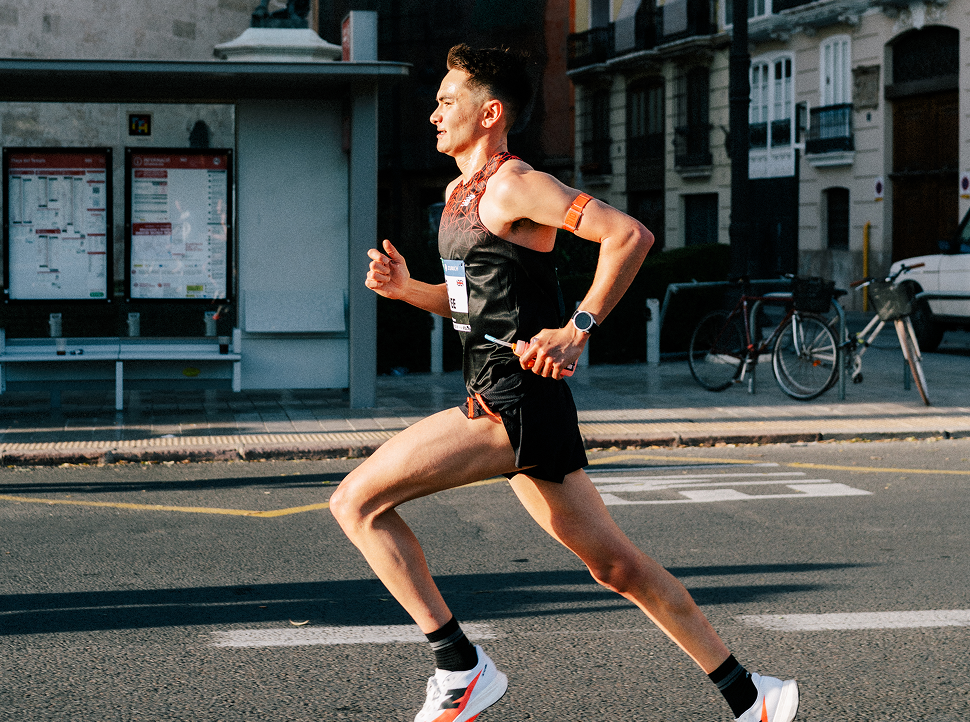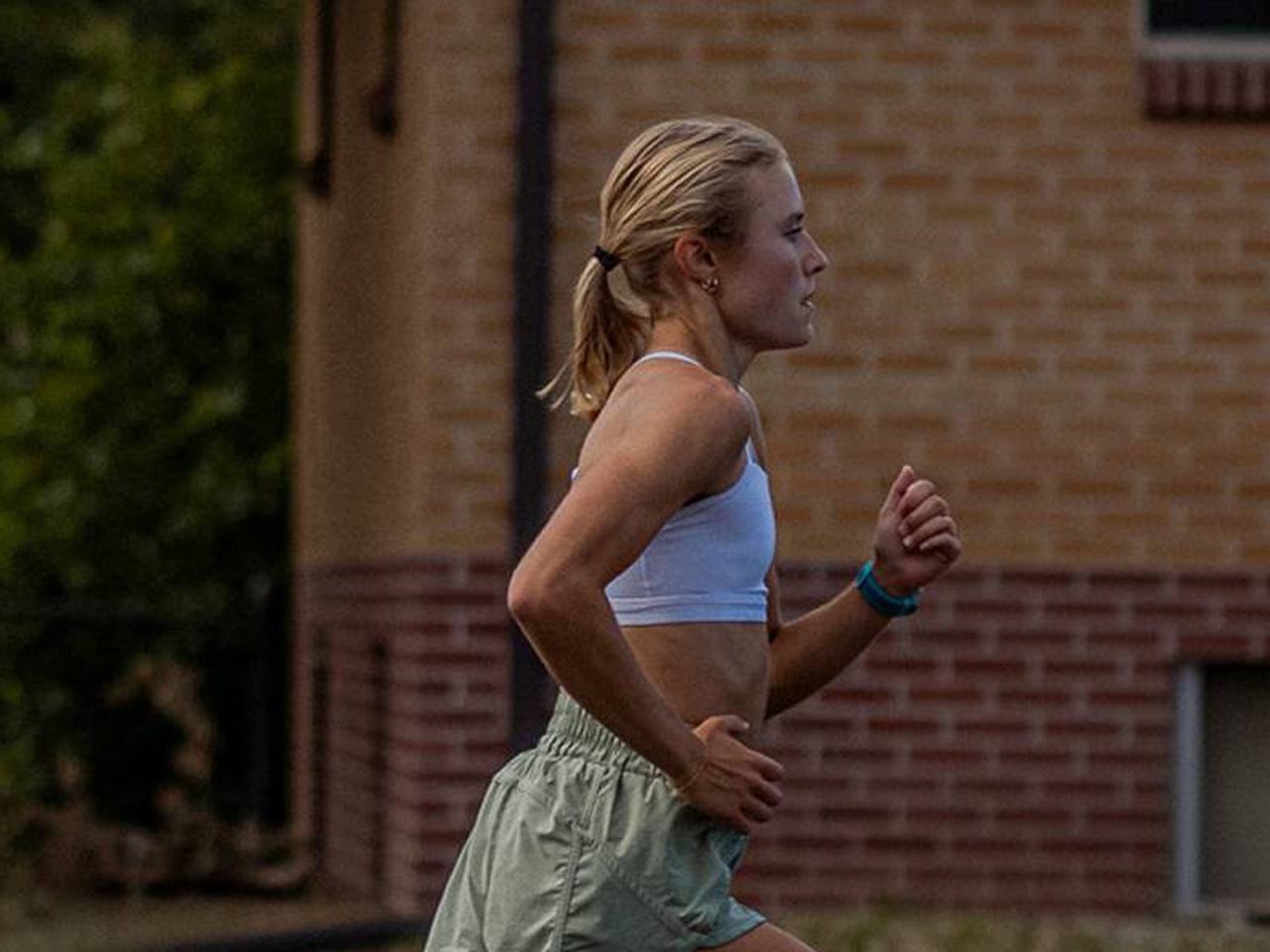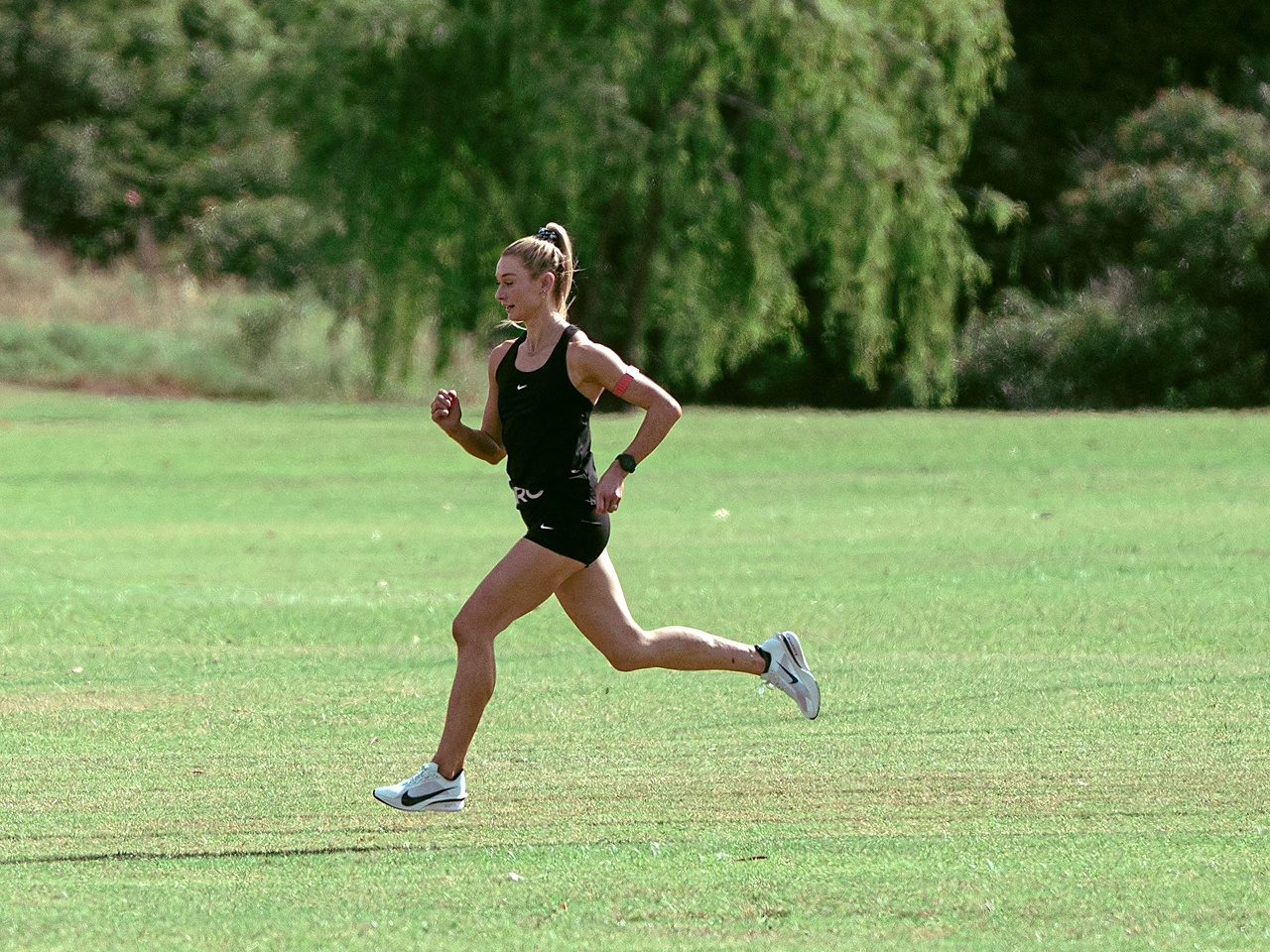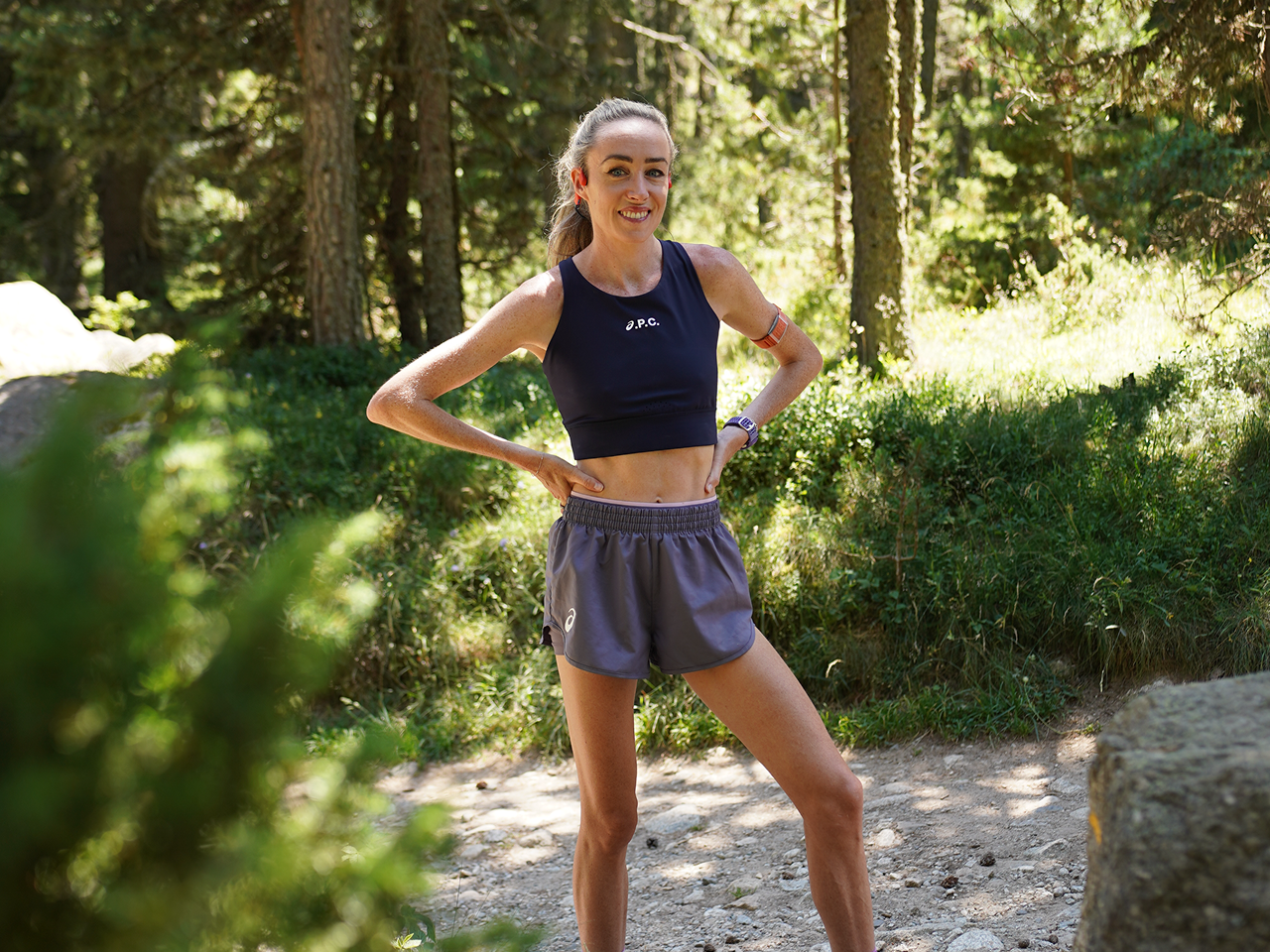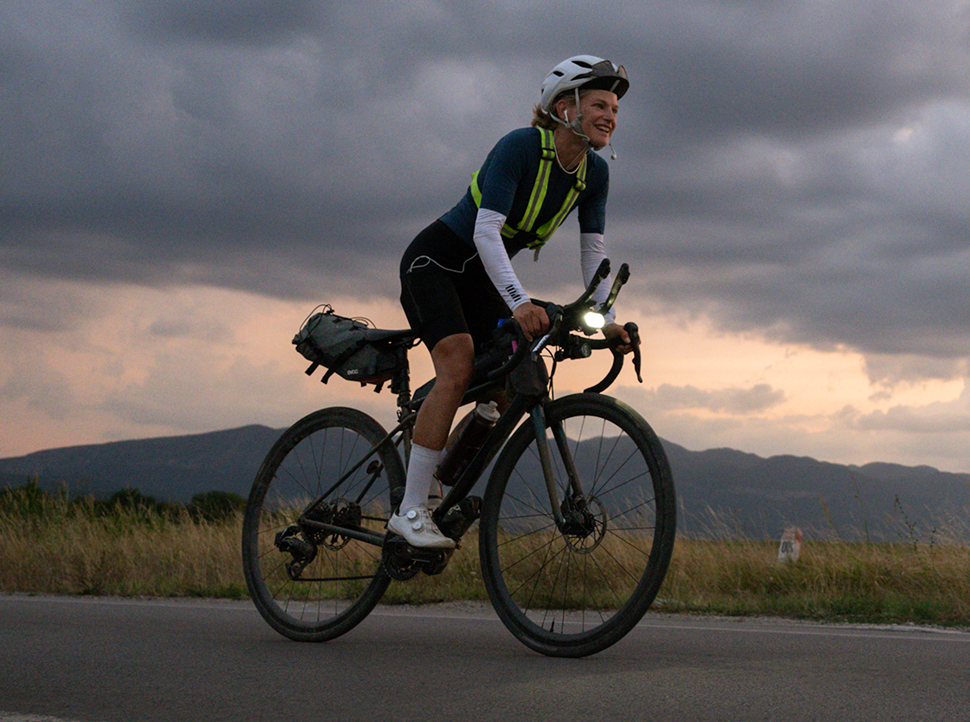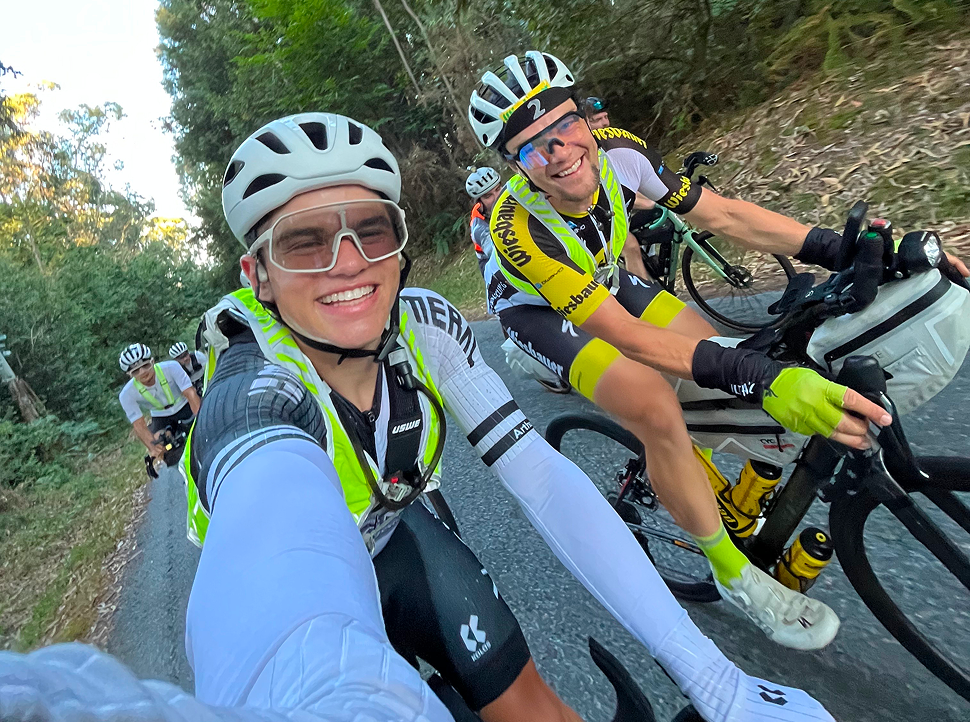Emma Bates’ steady ascent to becoming one of the top American marathoners was solidified even further at the 2023 Boston Marathon. Bates placed 5th overall with a blazing time of 2:22:10, which was a 68-second personal best. During an interview before the race, Emma indicated she knew she was in American record shape and was ready to put herself in a position to win.
Emma remained composed throughout the race despite the notorious ups and downs Boston is known for, which was evident in her COROS race data. Even when the lead pack broke away early in the race, Emma was patient and hung back. She caught up to the lead pack and stayed in front until the very end when Hellen Obiri of Kenya surged and took several other women with her with less than 2 miles to go.
Emma’s incredible performance is just a small snapshot of the consistent work she put in over the last 5 months. Race Day proved that she’s fit, confident, and ready to take on the best of the best.
Emma Bates’ Build to Boston
Emma’s last race before Boston was the 2022 New York City Marathon back in November, where she placed 8th in 2:26:53. After NYC, Emma took the rest she needed and put a plan in place with her coach Joe Bosshard to fine-tune her race strategy and prepare for Boston. Even for the best marathoners in the world, Boston is a tough course with unpredictable weather, which makes for some exciting, often surprising results. Emma, however, came prepared for race day thanks to an aggressive build from December through March, which included a lot of net downhill workouts to simulate the Boston course.
Below is a summary of Emma’s COROS data beginning late December, which includes COROS Base Fitness, Load Impact, and Training Status.
- Base Fitness measures the ability to take on exertion from long-term training. The higher your Base Fitness, the more you can sustain in a workout or race.
- Load Impact measures the exertion brought to your body from the training. Training Load is the 14-day accumulation of Load Impact.
- Training Status (previously “Fatigue”) reflects the fatigue your body is enduring from the recent training while considering your ability to sustain the impact. A low value means that your body is ready to take on more intensity.
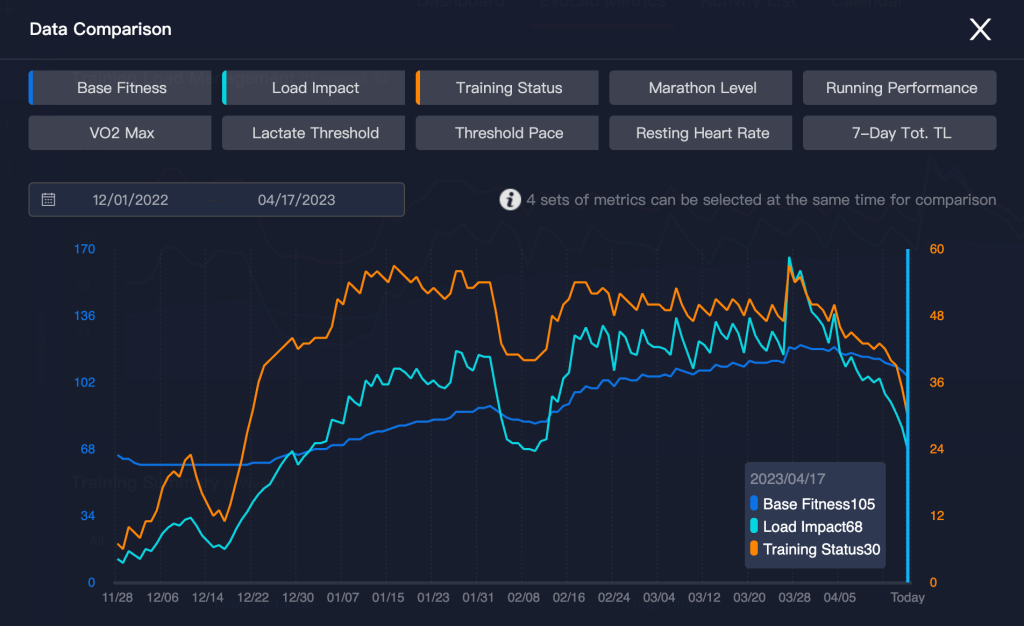 This chart shows Emma's EvoLab data dating back to December 2022. You can see her steady increase in Base Fitness, intense training block where she consistently hit 120 miles per week, and a quick taper before Boston.
This chart shows Emma's EvoLab data dating back to December 2022. You can see her steady increase in Base Fitness, intense training block where she consistently hit 120 miles per week, and a quick taper before Boston.
Important takeaways from Emma Bates’ COROS data leading up to Boston:
- Over 4 months, we see a steady increase in Base Fitness, from 68 to 118.
- Similarly, her Load Impact and Training Status continue to climb but plateau in February as she reaches a consistent weekly mileage and steady training.
- Although her Training Status supersedes her Load Impact for most of her build, she is recovering and building fitness rather than overtraining. If Emma were overtraining, we’d see her Base Fitness decrease, and her COROS app indicates poor recovery.
- We see a quick decline in how much stress she’s putting on her body starting in early April, indicating her taper. Emma explained to COROS that she doesn’t do long tapers and even did a workout on Wednesday before the race. Two weeks before Boston, she went from 120 miles per week to 100, then 80 miles the week of the race. She said she even made a hard fartlek effort about 5 days before the race.
Race Day Ready
The morning of the marathon, Emma said she was ready to put herself in a position to win. The days leading up to the race were full of excitement, nervous energy, and holding back just enough to remain focused. Emma indicated to COROS that during the bus ride to Hopkinton, she didn’t listen to music and took a brief nap to keep herself calm.
According to COROS, she was recovered and is ready for optimal performance. Her COROS EvoLab metrics indicated 100% full recovery or an “Excellent” rating in the app. Her Training Status measured 30 on a scale of 0 to 100. For optimal performance, COROS recommends your Training Status lies somewhere between 20 and 39. If you’re below that, you might be too rested, indicating that you haven’t pushed your body hard enough recently. You still want some snap and some edge on race day. If you’re above 39, this might mean that your body is still recovering from a previous hard effort. Emma was in the perfect position for a good day.
The 5 Different Training Status Zones in the COROS App:
- Minimal (0-19): Your current training load is light and may reduce your fitness in the long term.
- Performance (20-39): Your current training load has been reduced to allow for optimal performance in races.
- Optimized (40-59): Your current training load is ideal for maintaining or improving your fitness.
- High (60-79): Your current training may be unproductive due to the high recent load.
- Excessive (80-100): Your current training load is excessive and increases the risk of injury.
Emma Bates’ Boston Marathon Personal Best
With the training under her belt and the COROS data to prove it, Emma was ready for peak performance. Clocking in at
2:22:10 and the only American woman hanging with the lead pack, it was incredible to see just how fit she was during
the race itself, based on her COROS data.
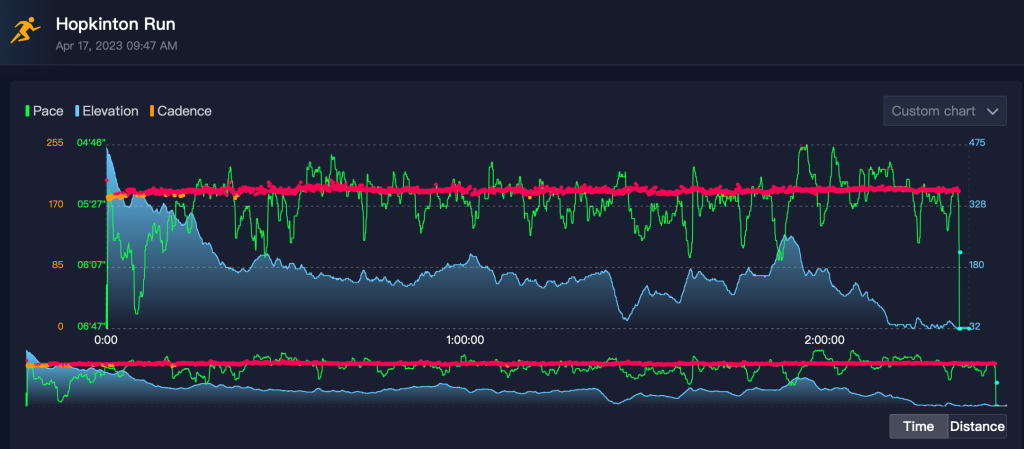 This chart fully summarizes Emma's Boston Marathon race in the COROS app. It includes the course elevation, time, pace, and cadence.
This chart fully summarizes Emma's Boston Marathon race in the COROS app. It includes the course elevation, time, pace, and cadence.
The chart above depicts the duration of her race, including pace, course elevation, and cadence. Throughout the race, Emma’s pace varied from 5:20s to 5:30s, with a few outliers due to the hills.
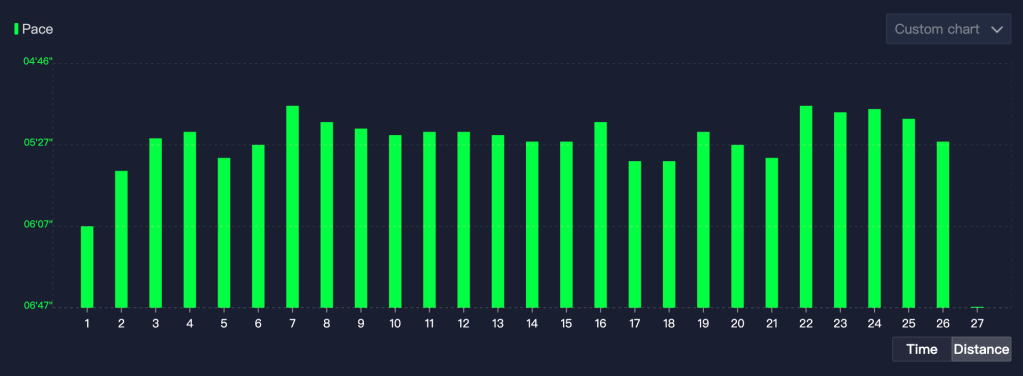 Emma's pace distribution throughout the race.
Emma's pace distribution throughout the race.
What’s truly fascinating, however, are the subtle changes across her cadence, stride length, and average speed between each 5-mile segment. When racing a marathon, especially Boston, it’s important to stay conservative initially and keep the effort consistent. You don’t want to waste your energy too early and risk the notorious bonk at the end.
 As the race progressed, Emma increased her cadence, speed, and average stride length.
As the race progressed, Emma increased her cadence, speed, and average stride length.
For Emma, the first 5-mile segment was conservative, with the first mile starting out at just over a 6-minute pace. As the race progresses, the pace picks up, and so does Emma’s cadence and stride length. During her last 5-mile segment, we see her highest cadence, stride length, and speed. Emma begins the race at 10.7 mph and picks it up to 11.41 mph by the end, clocking in at an average pace of 5:15 per mile.
What does this data tell us? Emma ran a smart race, remaining composed and saving the hardest effort for the last few miles. While some runners go too hard and too early, resulting in a slower pace and shortened stride length as they fatigue, Emma perfectly executed her race, allowing her to stay in the lead pack and fight for the top 5 spots.
Note: her watch wasn’t stopped immediately following the race as she celebrated, hence the difference in total time on her COROS watch.
What’s Next for Emma Bates
Emma has been vocal about her ambitious goals, which are completely in her realm. She wants to take a stab at the American record in the fall and make an Olympic team.
With the 2024 U.S. Olympic Trials less than a year away, Emma Bates will be a top contender and someone to watch closely. COROS is excited to see what’s next!
You can find Emma on Instagram to follow her training and keep up with her COROS data. Check out our blog to learn more about COROS metrics, including Base Fitness, Training Load, and Fatigue!

/filters:quality(90)/fit-in/970x750/coros-web-faq/upload/images/149055921de32865e0665b4ef69956df.png)
